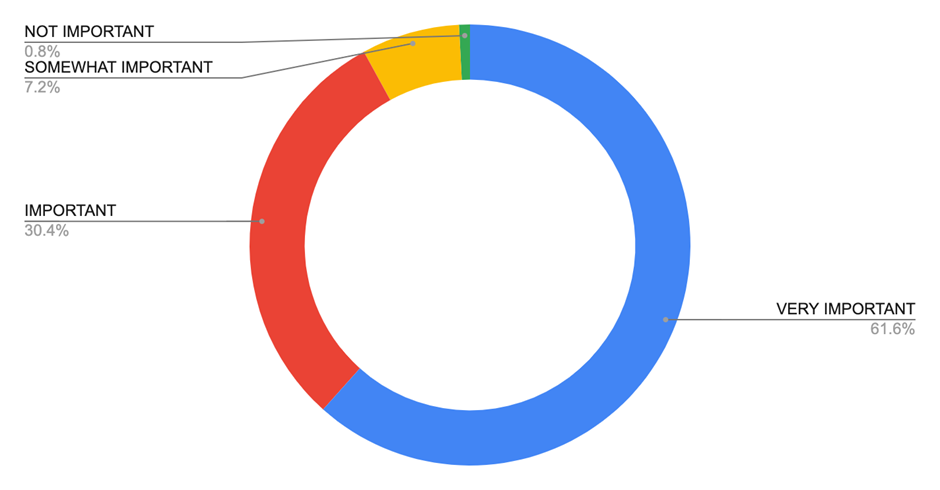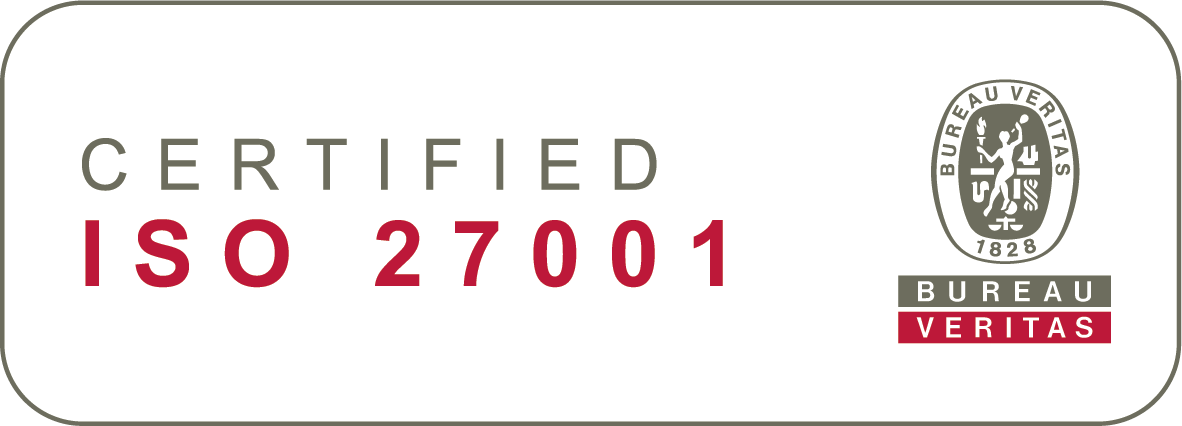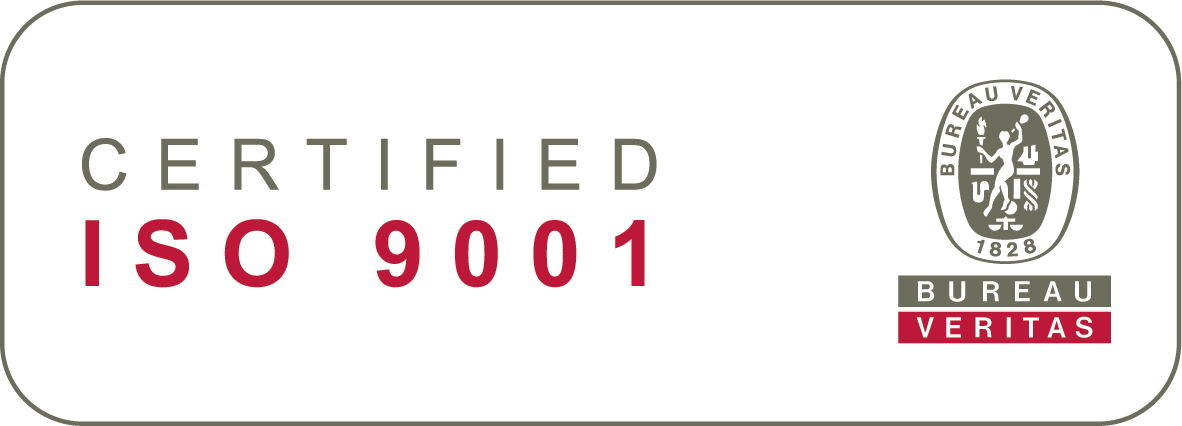Executive summary
Trust, data, hybrid work and wellbeing are the leading indicators of change on planet HR.
First, 96.9 % of respondents say they view trust as a leading indicator in their organisation. The increasing importance of trust gives more room to what individuals can bring to work. It paves the way for more autonomous, more involved, and more competent employees.
Similarly, while there’s still a gap between intentions and actions, we also expect HR to become more data-driven in the years to come. Our survey reveals that 35.7 % of respondents view their decision-making as highly data-driven, but 46.4 % of them say they place people analytics in high regard.
After a couple of rough years for everyone, it seems that a new model of work is emerging strong. 89,9% of our survey’s respondents view the future of work based on a hybrid model where employees get to decide where they work.
Finally, the latest significant learning to remember from our survey is that it is all about people. We like to say that an organisation can only be a great as its people, and we are delighted to see that 82.17% of respondents consider employee wellbeing as their top priority — with 81.1 % of respondents revealing that they paid even more attention to their people’s mental health during the COVID-19 pandemic.
How did we run this survey?
To conduct our yearly HR trends study, we conducted an anonymous quantitative survey (129 respondents) as well as qualitative 1:1 interviews to better understand the day to day challenges among HR professionals.
79.67 % of our quantitative survey respondents are HR professionals, and 16.26 % occupy other managerial roles outside of HR. Additionally, 4.07 % of the input we collected comes from employees with neither a position in HR or an executive function.

A vast majority (60 %) of the respondents come from Finland (32 %) and Sweden (28 %). However, we’ve also collected feedback from professionals located in Denmark (8 %), The Netherlands (7.2 %) or
the UK (5.6 %).

We aggregated all the answers we’ve collected over the past months and identified key trends we believe will shape not only the future of HR, but the future of work. To provide more context to the data, we’ve also included anonymous verbatims from the respondents of our quantitative survey.
Introduction
What a time to live, right?
The past 20 months have been challenging for everyone, all across the world. As individuals, we had to cope with an unknown virus spreading around like forest fire, thus causing stress. Similarly, all organisations had to quickly adapt to mitigate the threat, thus causing stress.
Consequently, every single human resource professional out there had to deal with an explosive cocktail and often create new processes from scratch to ensure that their employees had enough support to cope with change and keep their organisations afloat.
Before the COVID-19 madness, we were already observing the rise of HR within most organisations’ hierarchies. The past two years have radically accelerated the trend, and HR is now the cornerstone of more organisations. The equation is relatively simple; No functioning HR, no functioning people, no organisation.
Taking the past years into consideration, we decided to take the pulse of what you — HR teams — foresee for the future of work.
"HR stepped up. Despite the great challenges we’ve been facing in the past 18 months, it is formidable and inspiring to see how concerned and involved HR professionals are in building the foundations of the future of work."
- Björn Lorentzon, Business Development Manager at Sympa
Managing people
Managing resources is no more. We are managing people.
— 96.9 % of respondents say they view trust as a leading indicator.
The recent years have seen the emergence of many discussions on the HR planet regarding the new role of HR in an ever-changing world of work.
In other words, what we considered to be the full scope of an HR professional 20 years ago has become obsolete. In fact, our Future of Work survey results shows that it’s time for a change of scenery.
Yesterday, we were managing resources.
Today, we’re managing people with aspirations. This is mainly reflected by the increasing role of trust in today’s work.
Trust: The most important factor in today’s working life
The way we work has been challenged a lot in the past year and a half. The sanitary conditions have imposed remote work on a significant proportion of workers globally.
For managers, not being able to monitor what their teams were up to has been a challenge. For employees, the pressure of showing results while working unsupervised from a home office has been challenging.
For this new work organisation to function, trust is needed. Fortunately, our survey reveals that trust is highly valued or, at the very least, sought by 96.9 % of respondents.
In my organisation, trust is:

Seeing trust placed as the most crucial factor is a strong signal that the world of work is ready for less supervision and give more space to personalities and initiatives.
“Trust is the foundation for everything. If there is no trust, that is just awful for the whole spirit of the company. It creates this superficial happiness and collaboration and, in the end, everyone is afraid.“
– HR Manager (Finland)
The importance given to trust is also found in how organisations feel about monitoring employee activity, supporting self-leadership and nurturing holacracy.
From installing tracking software to simple task management, there are many ways organisations can monitor what their employees are up to. In reality, only 34.4 % of respondents say they monitor employee activity when 39.1 % say they don’t (26.6 % have no strong opinion on the matter).
We want to monitor employee activity in my organisation:

Towards more self-leadership and holacracy
Did we already mention trust?
We also asked you about your view on self-leadership (read: how much space you want employees to have) and holacracy (read: decentralised management style), and signals couldn’t be clearer:
- 92 % of respondents view self-leadership as important.
- 78.9 % of respondents view holacracy as important.
We view self-leadership as:

We view holacracy as:

We seem to be heading towards more autonomy and learning opportunities for employees. From an HR perspective, data suggests that Talent Management is to become a lot more important.
A good talent management strategy can have multiple benefits for organisations and their employees:
- For organisations, this means filling skill gaps by encouraging employees to grow specific competencies.
- For individuals, this means having more chances to develop as professionals and, therefore, create new career opportunities. What’s more, providing structured learning to employees gives them a sense of purpose – or new challenges to look forward to–and dramatically lowers turnover rates.
Executive decision-making to become less dominant?
Interestingly enough, we also find that the importance of Executive decision-making is showing signs of change.
We view executive decision-making as:

Yesterday, it was undeniable that decisions should only come from higher management. This survey ran among HR professionals from 16 countries shows that the way we perceive decision-making is slowly but surely evolving.
As organisations give more room to employees, it is only natural that decisional power trickles down to lower management layers.
“Our society is very ‘me’ driven. We are nurtured when we grow up; it’s all very individualist, and we measure individual performances, etc. But when it comes to companies, when we don’t all win, then nobody wins. If one team is not succeeding, it doesn’t matter if people around you don’t meet their goals.”
– HR Manager (Finland)
Managers to become coaches, not bosses.
Our survey reveals that managers aren’t simply just another layer of management in the hierarchy.
Organisations can only be as great as their people. And we now know that the more trust and autonomy workers receive from their employers, the more efficient they are at task. For managers, this new way of thinking means having to reinvent how they lead their teams.
Team leads and managers’ responsibilities are evolving, and HR professionals would like to see them switch their boss suits for trainers suits in the next couple of years.
In the new normal, a supervisor should:

“The transition from boss to coach loops back to the growing importance of trust and autonomy in the workplace. Most organisations are increasingly giving freedom for employees to deliver quality work on their own terms.”
Anna Aarnisalo, VP, People and Culture at Sympa
Towards more data literacy for HR teams
Yesterday, a significant part of HR decisions were made based on perception, primarily because HR professionals had no means to make data-driven decisions.
In 2021, we’re pleased to say that we’re way past those dark ages. However, HR professionals are left with another problem: more often than not, they collect more data than they can chew or know what to do with.
For instance, our survey reveals that:
- 46.4 % of respondents value people analytics.
- 50.4 % even consider their team to be data literate.
Additionally, 52.8 % of the respondents say they make some decisions based on what data tells them. However, only 35.7 % of them view their decision-making as highly data-driven.
Consequently, HR teams need to double down on data literacy to turn the information they collect into actionable, business insight.
“Tools have become more important in our working life. HR professionals have to do more research into technology trends and understand how they can truly benefit from it to take better care of their people, but also to map them in a system, based on processes that make sense.”
– HR Manager (Finland)
We consider people analytics as important:

My team is data literate:

We base some of our decisions on data:

Our decision making is highly data-driven:

“Change always takes time. But when there is a will, there is a way. We are pleased to see that HR professionals want to use more data to drive their decision making. Provided that they have the right mindset and the right tools, we believe that a majority of HR professionals will make informed business decisions, based on data, and, therefore, have more weight on their organisations.”
Jaakko Mattila, Director, Service Solutions at Sympa
Next year, we expect HR teams to invest more time in utilising more of the information they collect to better understand how their employees work, anticipate their needs, and support their organisations.
For instance, most organisations keep track of sick days among their employees. But how many can pinpoint the cause of a sudden increase in sick leave? Is it due to higher stress levels? Can it be linked to a change in management? Or is it simply the flu season?
We believe that HR’s ability to turn data into a story is one of the most important trends for the coming years.
Hybrid-work
Hybrid-work to become the new ‘normal’.
— 89,9% of respondents view the future of work based on a hybrid model.
2020 and 2021 certainly have been rough years for everyone.
Now, looking back, humans have been showing an incredible ability to adapt to even the most challenging situations. And we’ve done it again. As we’ve faced one of the most important health crises ever recorded in history, we’ve adapted and accelerated the rate at which we were already inventing tomorrow’s world of work.
HR professionals have seen their roles evolve.
Because the pandemic has changed the way people work, it has dramatically altered HR professionals’ day-to-day work and how they interact with employees.
As a matter of fact, the Future of Work survey reveals that 9 in 10 HR professionals feel that their role has changed in some ways during the COVID-19 pandemic.
My role has changed during the pandemic:

“We are facing the fact that the way we used to live is no more. It creates a feeling of discomfort. Our job is also to put ourselves in the shoes of those who do not cope well with change. It’s scary.”
– HR Manager
A new challenge for HR: (re)invent our offices.
We, humans, are beings of habits and tend to oppose a certain form of resistance in the face of change.
For instance, suddenly having to adapt to socially distanced and remote work wasn’t easy. But so is breaking the new habits workers have adopted over the past two years. This translated in our study, with 7 in 10 HR professionals saying they are trying to get people back at the office.
I am trying to get people back to the office:

“It is challenging to bring people back when they are now used to working from home and are happy that way.”
– HR Manager (Finland)
“We want people to have the freedom to choose where they work, but create an office environment and culture where people want to come.”
– HR Manager (Finland)
In application, it seems that the challenge for HR professionals and other executives isn’t about bringing people back to the office, but how to get the office back to their working lives.
Hybrid work as the new ‘normal’.
Our survey makes it clear; the future of work is neither office-based nor fully remote. The future of work is hybrid.
A whopping 89,9% of respondents say they see the future of work based on a hybrid model, where employees would work from different locations, may it be an office, their home, or any other suitable place.
How do I see the future of work for my organisation?

“We're not trying to force anyone back to the office. However, we will continue to host certain events (e.g. after work) and catering services at our offices. Also, teams can assess themselves if they need to be at the office at the same time. And I think the office is a good place for team building activities, to get to know new people better, and for the company culture in general.”
– HR Manager (Finland)
“We want to steer away from dull 8-16 cubicles. The office has to be transformed into a social meeting point and activity-based facilities. Also, we need to find new "reasons" to motivate employees to come to the office (e.g. access to a gym, take away food-restaurant, dry cleaning, hairdresser, massage, day spa, wellness and relaxation areas. We’re also implementing inspirational coworking spaces.”
– HR manager (Finland)
Towards better internal communication processes
Transparent communication is the foundation of any successful process. During the darkest hours of the pandemic, it was paramount for organisations to double down on internal communications to ensure that their employees were 1. holding it together and 2. up to the task.
Consequently, 46,15 % of respondents say internal communications have improved during that time when only 12.31 % say the quality of internal communications has deteriorated. For 41.54 % of respondents, internal communications quality and processes have remained the same.
Internal communications have improved in my organisation during the pandemic.

Of course, if the overall trend shows improvement, some challenges remain:
“In some ways, we communicate a lot more via email or (Microsoft) Teams but, on the other hand, some of our staff members have become champions at hiding. It can be difficult to reach them, and we can’t know whether they are doing it on purpose or if they are struggling and drowning in work at home.”
– HR Manager (Belgium)
Some real-life interactions are still challenging to implement remotely
As most organisations have seen their overall internal communications improve in some ways over the past years, we’ve seen new informal practices like remote coffee breaks, remote morning commute or even remote after-work events emerge.
However, data shows that remote substitutes are challenging to implement and can’t fully compare with “the real thing”, to quote some of our respondents.

In the end, with 41.1 %, regular remote catch-ups seem to be the most common practice across the board, followed by remote coffee breaks (22.83 %) and remote walk and talk meetings (17.35 %).
Hiring
Remote hiring to become more common
— 27.6 % of respondents want to hire remote talent
Hiring fully remote talent is becoming a serious option
Remote work has long been considered a danger. After all, how can you:
- trust remote workers to work and not “Netflix and Chill”?
- Monitor their daily activities?
- Justify why some workers get to work from home while others are required to show up at the office?
Of course, we can agree that the above concerns were still relevant up until two years ago. Isn’t it funny how our vision of remote work - as a society - has evolved in such a short period of time? What’s more, it’s not only a matter of perception; we now know for a fact that remote workers are more productive and don’t require micro-managing to deliver quality work.
This new perception of remote work can also be found in hiring intentions for the coming months and years; while a firm “no” still leads the way with 38.2 %, hiring fully remote talent has become a serious option for 27.6 % of HR professionals.
Hiring fully remote talent is becoming a serious option for my organisation.

“Things have changed. I recommend changing our way of recruiting candidates. We need to analyse candidates differently compared to what is happening right now.”
– HR Manager (India)
Most organisations managed to hire a lot of employees during the pandemic
The pandemic has been unfair on organisations with no ability to rely on remote work to function normally. However, our survey reveals that most organisations (91.9 %) managed to hire at least 10 people throughout the pandemic, with a majority of them (43.5 %) reporting 10 to 50 new hires.
How many people did we hire during the pandemic?

Integrating into a company when hiring remotely isn’t as challenging as we feared.
Categorised as highly social animals, humans need to interact with their peers to nurture relationships and feel like they belong. Here again, the communication efforts mentioned earlier show fantastic results.
84.6 % of respondents report that employees hired remotely in the past two years are well integrated into their organisations.
Are new remotely hired employees well integrated into your organisation?

A note on potential legal barriers regarding remote hiring
Trends and habits always move faster than laws. While most countries already have legal boundaries to hire domestic remote workers, the lines blur when hiring workers in other countries, let alone different continents.
In practice, we are still to clearly define how organisations should deal with healthcare, taxes, paid holidays or even parental leaves.
"Moving forward, we expect it to become a serious topic for organisations hiring remote workers. This means, among other things, that organisations will increasingly need to rely on flexible HR systems to adapt as we write the future legislation of work."
John Cozzi, Head of Content at Sympa
Caring
We care: it’s all about our people
— 82.17 % of our survey respondents consider employee wellbeing as their priority.
Employee wellbeing is THE priority.
We’re witnessing a trend putting people back at the centre of the attention - from an organisational perspective (and not only for HR). For instance, 82.17 % of respondents view employee wellbeing as their North Star (13.18 % somewhat agree, and 4.65 % disagree).
Employee wellbeing is a top priority for me:

“We want our employees to have the possibility to work both from home and at the office. We understand that it is important to meet with colleagues, but remote work has also increased wellbeing and flexibility. Finding the right balance is important and increases trust.”
– HR Manager (Finland)
Echoing back to the fact the role of HR has evolved during the pandemic, 81.10% of our survey respondents say they paid extra care to their employees at the heart of the pandemic (14.17% say they haven’t changed their ways, and 4.72% say they paid less attention to their employees during that time).
I paid extra care to employees wellbeing during the pandemic:

“We encourage our managers to engage with employees to develop a caring culture. Caring for Employee wellbeing should be the new normal for managers.”
– HR Manager (Finland)
One of the most obvious ways for HR and managers to pay attention to their employees has been to directly check on them during this challenging time. 74.80 % of survey respondents say they checked from ‘often’ to ‘very often’ on their employees to ensure they were fine and had everything they needed to work in the right conditions.
Additionally, 20.47% say they haven’t changed the frequency of check-ups, and 3.94 % say they have not reached out to their employees during that time.
During the pandemic, I checked on my employees …

“The pandemic made it a necessity to communicate more often. We started to issue a digital mini-magazine for personnel with fun stuff. We also use it to Introduce new employees as well as hobby ideas when working from home.”
– Manager (Finland)
Tracking employee wellbeing
In application, we now know that the most successful companies highly value and support their employees.
We also know from recent research that motivation isn’t just something that happens. It comes from employee wellbeing. A report from the University of Oxford’s Saïd Business School revealed that happy employees are, on average, 13 % more efficient at work. Additionally, happier employees aren’t just more productive; they stay longer, thus reducing turnover costs for organisations.
How we track employee wellbeing in my organisation:

“We want our employees to be actors of change. We often ask for feedback to get tips and ideas from all employees to implement new concrete and relevant actions.”
– HR Manager (Finland)
Trying to offer a healthy work-life balance.
As remote and hybrid work becomes the new reality, HR professionals face a new challenge; how to ensure that employees have a healthy work-life balance? From difficulties to fully disconnect to working longer hours than usual, remote work can have disastrous consequences if not taken seriously.
From the look of it, most organisations seem to have a plan to help their employees get a healthy work-life balance.
What we do to help employees find a healthy work-life balance:

The fight against burnout is ragging on.
Despite an increase in support from HR and management in general, the pandemic had a toll on employees’ mental health. In other words, almost 7 in 10 respondents say that the risk of burnout has increased in the past years.
Has the risk of burnout increased during COVID-19?

When working from home or under pressure due to social distancing measures, new challenges erupt for managers. For 73.8 % of respondents, open communication remains the best way to spot early signs of burnout and prevent things from escalating from bad to worse.
Another strong trend we see emerge is employees looking for more meaning in what they do; why should they spend most of their time and energy at work and neglect their personal lives? The new challenge for organisations and HR professionals is to provide more meaning in the workplace, especially when targeting millennials.
“Millennials increasingly choose to work for companies that try to make the world a better place, companies with a clear message.”
– HR Manager (Finland)
“Employees choose important life events, such as seeing their kids grow up, instead of more recognition or better compensation at work. We only have this one life, so, why earn €100K a year when you can live a good life with less income and see your children grow up?”.
– HR Manager (Finland)
How we try to sport early signs of (and prevent) burnout:

“We encourage our managers to keep close contact with employees so that they spot early signs of burnout or any other problem for that matter.”
– HR Manager (Finland)
Let’s write the future of work together
We are living exciting times. Together, we have a unique chance to define the new ‘normal’; what should the world of work look like for the next decades?
We understand that our survey is not representative of all workplaces, markets, industries and locations, but it confirms what other expert surveys like ours have been revealing thus far;
- We are managing people.
- The future of work is hybrid.
- Hiring remote talent has become mainstream.
- We care for our people <3








